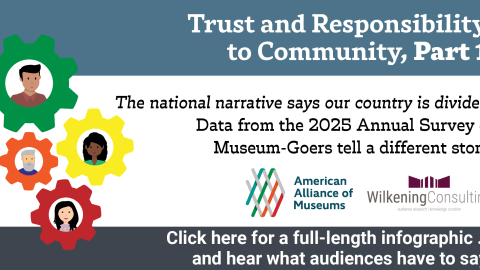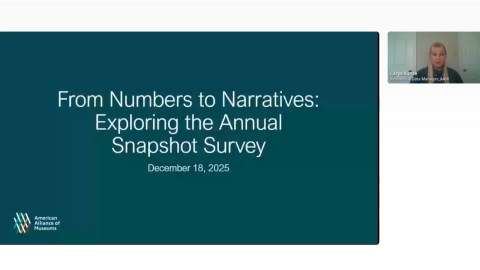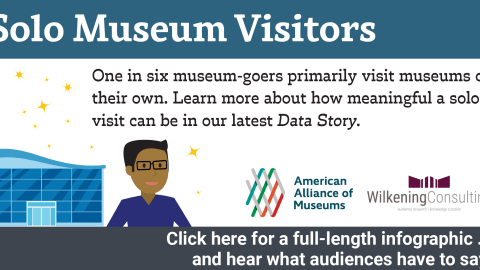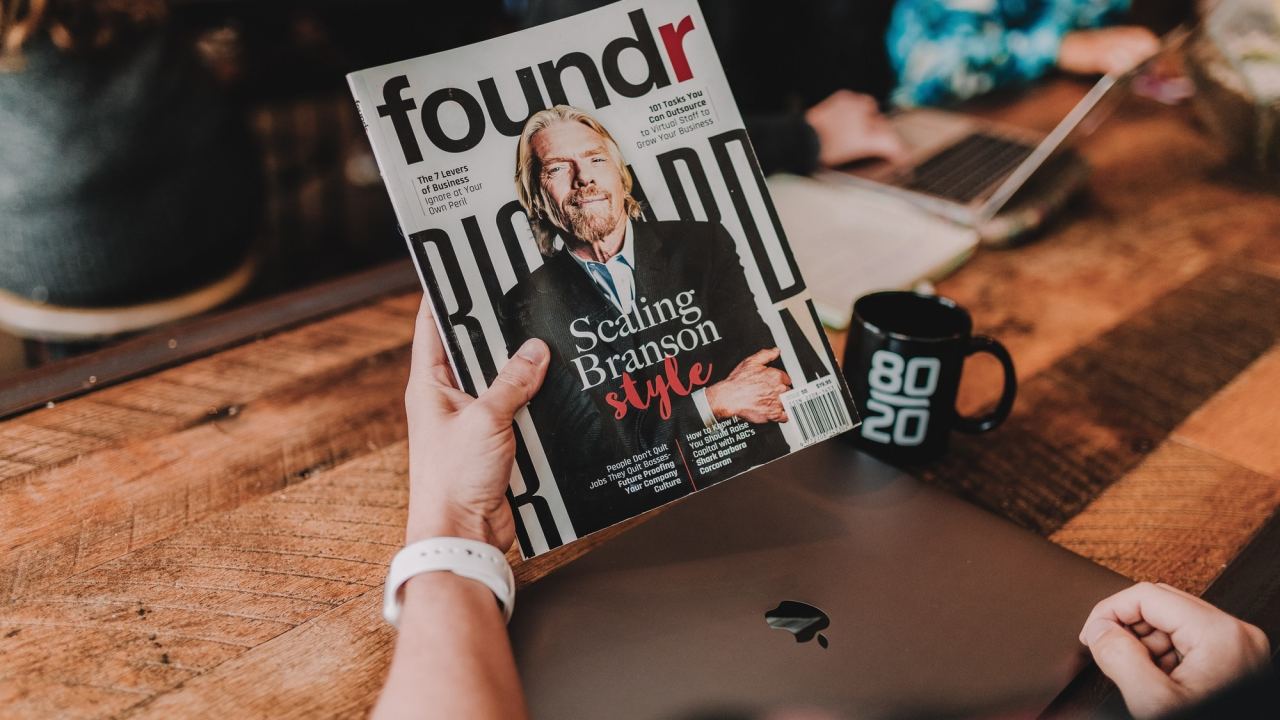
Museum professionals have creative aging journeys of their own, which might mean figuring out how best to cap off a career in the field. But in today’s world, with more people enjoying active and engaged lifestyles later into life, there are other options beyond a traditional “retirement.”
As Elizabeth Williams, founder of the Southern Food & Beverage Museum in New Orleans, shares on the blog today, former museum presidents and CEOs are increasingly choosing to transition into “founder” or “emeritus” roles that allow them to keep contributing to their institutions while turning over the reins to new leadership.
“The measure of achievement is not winning awards. It’s doing something that you appreciate, something you believe is worthwhile.”
—Julia Child
Most of us, as we age, have accumulated a lot of different experiences. These experiences allow us to sift through our daily lives and identify what we enjoy doing, what gives us joy and meaning, and what we need to jettison. This screening process is certainly not exclusive to the aging process—we have been doing it since infancy—but as our self-knowledge deepens with the sheer number of experiences, our pruning process becomes ever keener. And, of course, as we recognize that our time is diminishing, the time that we have left seems too precious to squander doing things that should be jettisoned.
When I was in my fifties, the idea that would consume me finally materialized. Before this point, I had worked productively with a modicum of satisfaction. But after this idea erupted, I was filled with energy and purpose. It was an idea that I could not abandon for its inconvenience, for the work that it would require, nor for the unrelenting dedication that I foresaw would be necessary. Everything that I had experienced and learned from working and from life would coalesce into founding the Southern Food & Beverage Museum (SoFAB) in New Orleans.
I took much inspiration from the fact that Julia Child had begun her television career in her fifties. She had the energy and imagination to create a place for herself using the springboard of a revolutionary book and a burgeoning public television industry. She forged a career that appeared to be fulfilling, challenging, and exciting. And she pursued this invented career until her last days. She even had tentacles into museums—being on the board of the wine, food, and arts museum Copia in Napa, California, and leaving her kitchen to the Smithsonian, where it remains a popular exhibit in the National Museum of American History to this day.
Being in my fifties myself when I founded SoFAB, I was able to bring my whole life’s experience into the project. This included a lifelong interest in the culture of food and drink, experience in the practice of law, international travels, the administration of a large institution, government interfacing, fundraising, and involvement in the start of two museums. Beginning down the path of founding SoFAB made me appreciate the years I had spent accumulating these disparate experiences. There was no linear path in front of me when my work life began, but looking back I can now see the brightly glowing yellow brick road. Unless you find the thing that consumes you early in life, the path is usually only clear in hindsight. My own experience has made me think that it is never too late to find that concept, that idea, that thing that will bring you in thrall.
But now I am approaching seventy. I am fortunate enough to have my health, stamina, and enthusiasm intact. But I am also aware that my patience with the minutiae and the quotidian is waning. I am certainly not ready to spend my life puttering as I face my dotage, but I want to see the big picture. Part of this has meant leaving my position as President & CEO of the Southern Food & Beverage Museum, which had grown into the National Food & Beverage Foundation, with the National Culinary Heritage Register, the John & Bonnie Boyd Hospitality & Culinary Library & Archive, the Nitty Grits Network, the Museum of the American Cocktail, and other museums circling our orbit. Before I left, I wanted to know all of this was going to continue when I was no longer at the helm. I asked the board to find my successor while I was still able to transfer the institutional memory.
Taking a cue from the language of the tech companies spreading like wildfire in our era, I became the “Founder,” and the board hired Brent Rosen to become the President & CEO. My new role includes strategic planning, institutional marketing, and—on a more specific level—writing books, podcasting, and public speaking. I am not ready to abandon the organization, but I felt the need to set up a transition plan, since I know that an organization may not survive the death or incapacity of a founder. I also did not want to be the CEO/Founder who actually damages the organization he or she creates by sticking around too long. With a new CEO in place, that concern is alleviated, and I can concentrate on the bigger picture for NatFAB. I am still on a continuum, but I feel reinvigorated as I face new challenges and get to dream all over again.
In this very city, another founding former CEO of a monster of a big museum has also transitioned to a new position. Gordon “Nick” Mueller, now Chairman and CEO Emeritus of the National World War II Museum, continues to write and serve as ambassador for the museum. (The city of New Orleans does seem to be home to many innovative museums. There is creativity in the water.) Although he founded the museum with his pal and fellow University of New Orleans historian, Stephen Ambrose, Nick was also a Vice-Chancellor of the university and founded a very successful international program for the school in Innsbruck, Austria.
Nick and Stephen concocted the idea of a D-Day museum over twenty years ago. After some planning and time completing other obligations, Nick was cajoled into becoming the President & CEO of the museum, at which point he grew the board of trustees from local to national, and expanded the museum’s budget and scope. The museum was originally dedicated to the exploration of D-Day, because New Orleans was the home of the flat-bottomed Higgins boats that carried the soldiers to the beach during the invasion, but it eventually expanded that mission and became the National World War II Museum.
After leading the World War II Museum into its position as one of the most important museums in the United States, Nick decided that it was time to move into another role. After several years of planning this transition, he became the President Emeritus and turned the reins over to the new CEO, Stephen Watson. Today Nick has left his management duties behind and is developing and expanding the intellectual underpinnings of the World War II Museum by, for example, planning conferences and writing books.
Whether transitioning to Founder or to President Emeritus, experienced and maturing former executives still have a lot to offer to the organizations that they have helped to build. The most obvious contribution is institutional memory, but even beyond that, former chief executives have a wealth of ideas and projects that they have not had the time, the money, nor the opportunity to develop. Many of those ideas are likely to enhance the organization, and in this new status, the former chief executive is in the business of institutional marketing, strategic thinking, and building intellectual infrastructure. In this new era when we are not ready to give up meaningful work as we age, the use of this emeritus-like status is likely to expand, and museums with the foresight to adopt it will continue to benefit from their people.
About the author:
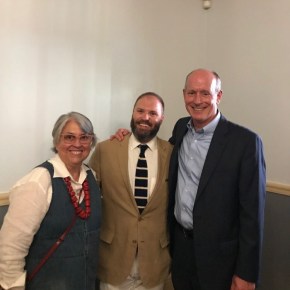
Elizabeth Williams grew up eating in two great food traditions—New Orleans and Sicily. She is Founder of National Food & Beverage Foundation. She coauthored The Encyclopedia of Law and Food. New Orleans: A Food Biography was selected as the 2018 One Book, One New Orleans book. Lift Your Spirits was published in 2016. She is working on a book about Creole Italians.
A graduate of Louisiana State University Law Center (JD) she served as a U.S. Army Judge Advocate General. She practiced law in Washington, DC, and Louisiana. She has served as judge in many cooking competitions and consulted internationally on the food of New Orleans. Travel is an excuse to eat in new places.




